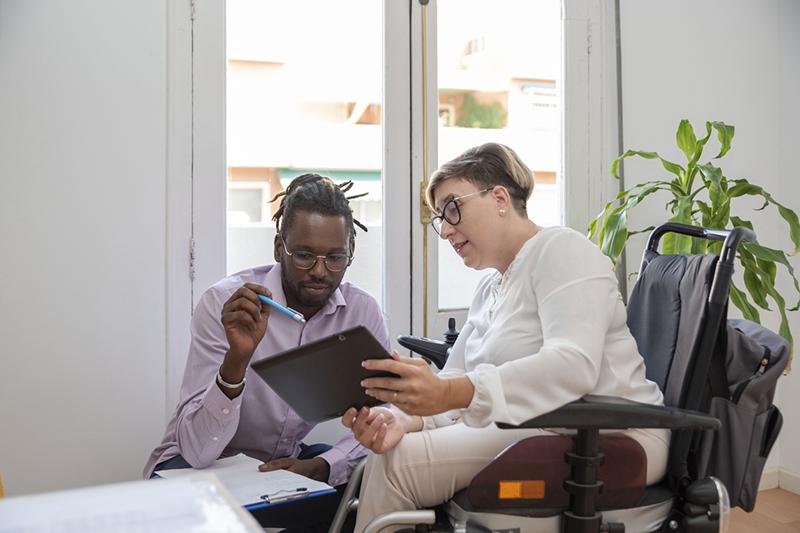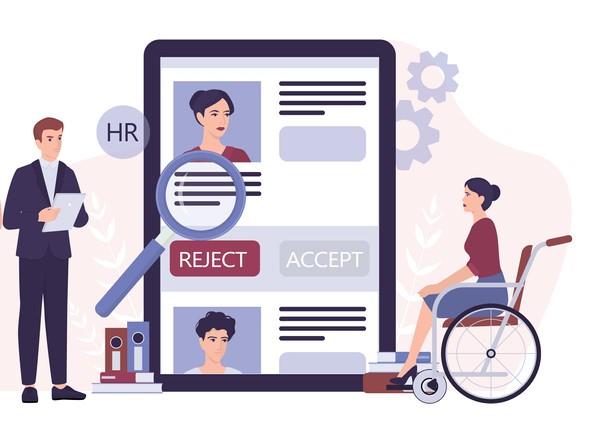Around one in four people in the UK are disabled. If studies don’t include disabled people, the findings may not apply to disabled people in the real world. That means that “evidence-based” changes in healthcare risk entrenching the health inequities disabled people face.
So, what can researchers do to help?
A key step is to make sure disabled people are included in research teams, both as staff and public contributors. This is important whatever your research area. Disabled people can, for example, identify relevant research questions and advise on making study designs and dissemination materials accessible and inclusive. Sounds good in theory, right? But undertaking meaningful patient and public involvement (PPI) with disabled people can be challenging and it’s often hard to know where to start.
Here, we offer six practical tips on how to conduct PPI activities with disabled people based on our experiences and a global call to action for disability inclusion in health research.
1. Follow good practice standards
As with all PPI activities, it’s essential to follow good practice standards such as the UK Standards for Public Involvement in Research. The Inclusive Opportunities standard is especially important when involving disabled people. Think through this standard’s reflective questions, such as how you can involve people most affected by your research early, address barriers to involvement, and tailor your communication to different people and groups.
To address barriers to involvement, make sure you budget for costs that may be needed to involve disabled people. For example, costs for carers, accessible transport and developing/printing accessible materials like Easy Read documents.
2. Involve diverse public contributors
The greater the diversity of your public contributors, the greater the diversity of insights they are likely to bring. Disabled people are heterogenous and cannot be represented by a single individual. Aim to recruit people with a range of impairments and lived experiences.
- Spotlight guide: Routes to improving disability support in higher education
- Key challenges for patient and public involvement leads
- Address the lack of research in Para sport by embedding students in doctoral programmes
Considering how other characteristics might interact with disability is also vital. Being from an ethnic minority group, having low socio-economic status or belonging to other underserved groups can amplify or change the barriers disabled people face. People from these groups often have most to gain from research but are rarely included in PPI activities. To change this historical exclusion, researchers need to intentionally involve people who face intersectional disadvantage. Working with community organisations who represent or have trusting relationships with underserved groups is often essential for achieving this.
3. Think about your language
Disability language preferences vary widely. Here, we’re using “disabled people” to align with the social model of disability. In other settings, “people with disabilities” may be more appropriate. Some people considered disabled under the Equality Act 2010 do not identify as disabled. So, other terms, such as “deaf people” or “people with long-term conditions”, may be better.
In practice, always use the terminology preferred by the disabled people you’re working with. It’s worth doing background reading about terms typically preferred by specific communities. But the only way to find out people’s individual language preferences is to ask them. Think about the terminology you use in any documents or papers, too. It may be helpful to explain your choice of terms and acknowledge that people’s terminology preferences vary.
4. Agree on guiding principles
Guiding principles can act as a compass, helping you decide what actions to take. Our global call to action provides principles to adapt to your own area. A key principle is to adopt a strengths-based approach. Researchers often ask disabled people what they need. But how often do researchers ask what disabled people can bring to the study? Whether it’s lived experience, professional skills or other abilities, disabled people have much to offer. So, ask your contributors about their strengths and give them opportunities to use them.
Addressing power imbalances is another important principle. This requires ongoing critical reflection on how public contributors are involved. Small steps such as not using professional titles and meeting in community venues can foster more equal relationships. Jointly leading activities is another helpful approach. For example, the No Research about Us without Us project was jointly led by Gary Bourlet, a self-advocate from Learning Disability England, and Amy M. Russell, a researcher from the University of Leeds.
5. Maximise accessibility
Maximising accessibility is key to involving disabled people with varying strengths and needs. Examples of ways to do this, learned from a previous public involvement project, include offering information in accessible formats such as audio, providing sign language interpreters and being flexible with the timings and locations of PPI activities.
People with the same sorts of impairment often have differing accessibility needs. So always ask public contributors about their individual needs in advance. Whatever people’s needs, careful planning and allowing extra time are usually essential.
6. Evaluate your activities
It is not enough to simply involve disabled people. Evaluation – the ability to report barriers – is essential to respond to inadvertent exclusion. Regularly gather feedback from and reflect with your public contributors. Think about what went well, what didn’t go well, and what you could do better next time. Offer a range of accessible feedback options, such as open discussions and anonymous forms.
It’s also worth considering if and how to collect diversity monitoring data from your public contributors. Even in research studies, disability data is rarely collected – this is a major problem in itself, as a 2025 review of trial reports has revealed. So if you’re going to collect diversity monitoring data, think about how to ask about disability in an inclusive way. The Diversity and Inclusion Survey (DAISY) Question Guidance has suggestions on how to do this. Your public contributors will also be able to advise you on collecting diversity monitoring data for participants.
Many steps are required to ensure health research addresses disabled people’s needs and priorities, and that disabled people have the chance to be included as study participants. Conducting PPI activities with disabled people is a foundational step and ultimately helps achieve high-quality research with real-world impact.
Anna Anderson is a research fellow in qualitative research; and Amy M. Russell is an associate professor of health inequalities, both at the University of Leeds.
The authors would like to thank Anna Lawson for her feedback when drafting this piece.
If you would like advice and insight from academics and university staff delivered direct to your inbox each week, sign up for the Campus newsletter.




comment